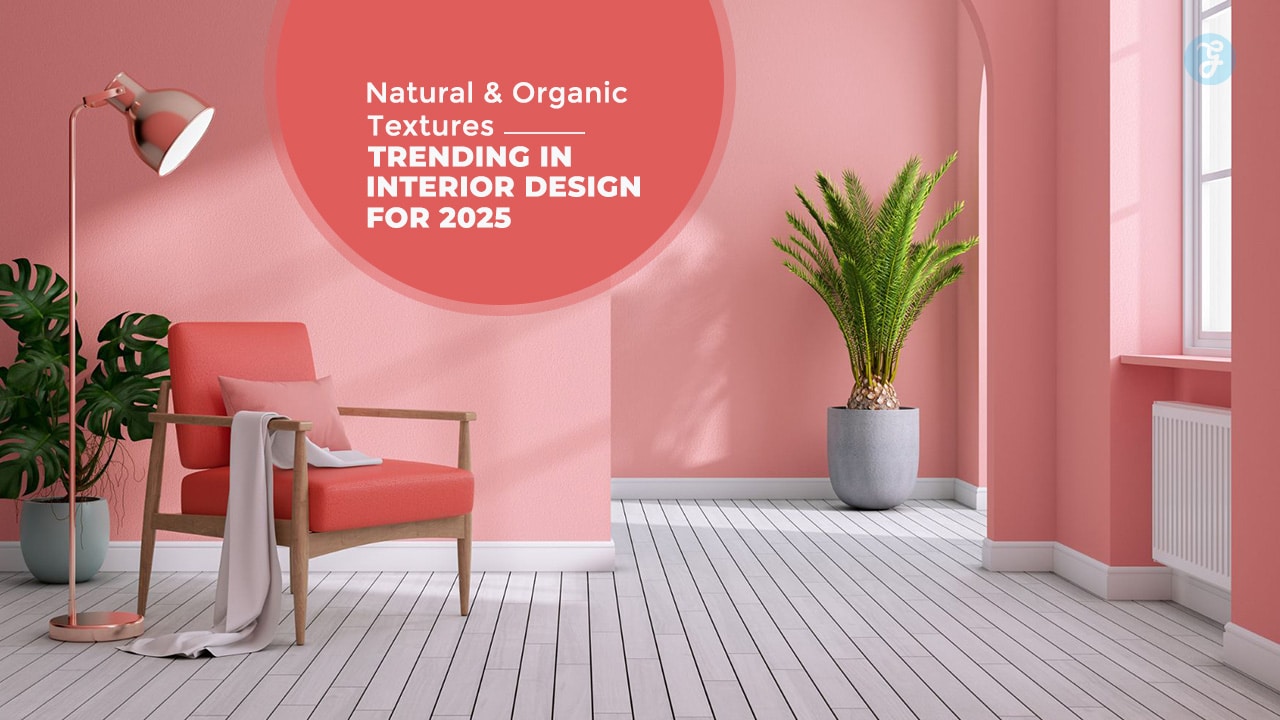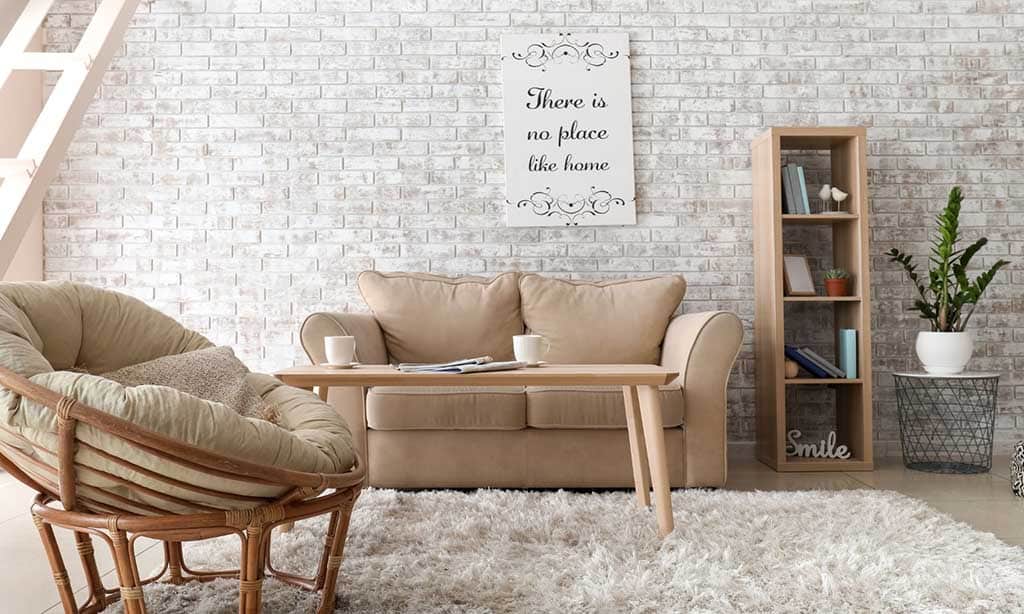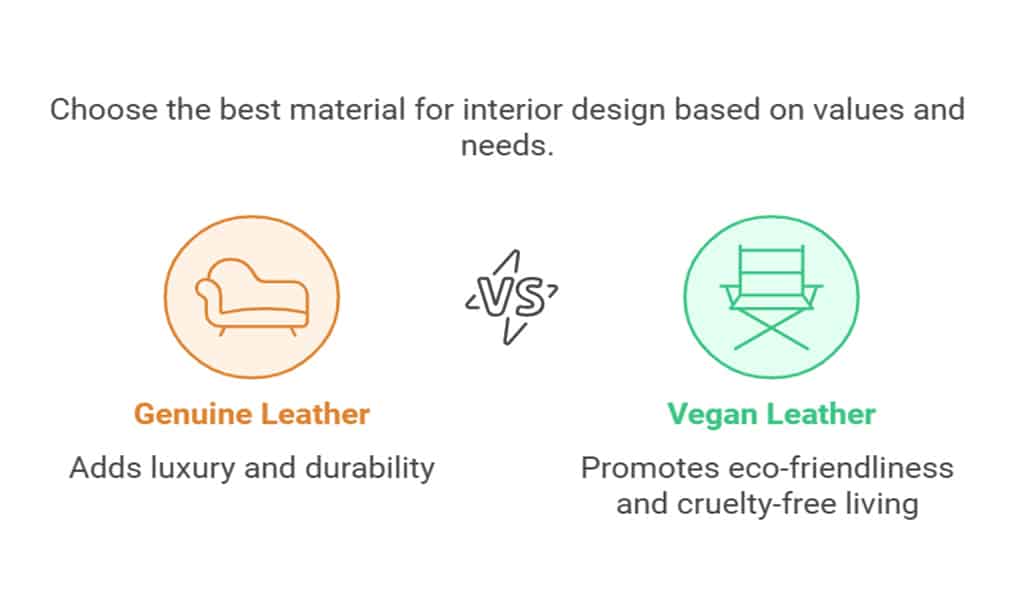In 2025, natural and organic textures are revolutionizing interior design, reflecting a shift toward sustainability, biophilic principles, and a desire for serene, timeless spaces.
These textures combine beauty, durability, and eco-consciousness, allowing homeowners and designers to create interiors that feel both authentic and functional.
From earthy materials like terracotta and cork to the elegance of stone and the rustic charm of reclaimed wood, these textures help bridge the gap between nature and modern living.
This article explores 12 trending natural and organic textures in interior design trends, providing insights, practical applications, and expert tips to incorporate them into your home.
Why Natural and Organic Textures Are Popular in 2025
Sustainability as a Priority
Today’s homeowners and designers are increasingly focused on eco-conscious living. Materials like reclaimed wood, jute, and cork are renewable, recyclable, and reduce environmental impact.
Incorporating these elements not only enhances the aesthetic appeal of a home but also reflects a commitment to sustainability.
Benefits of Natural Textures
- Enhanced Well-Being: Organic textures promote relaxation and mindfulness by fostering a connection to nature.
- Timeless Elegance: Natural materials, such as stone and wood, outlast fleeting design trends.
- Durability: Many organic materials, like marble and hardwood, are built to last for decades or longer.
- Versatility: These textures blend seamlessly with modern, rustic, industrial, and minimalist design styles.
12 Natural And Organic Textures in Interior Design Trends for 2025
1. Reclaimed and Textured Wood
Wood has always been a staple in interior design, but 2025 focuses on unique textures and sustainable choices like reclaimed wood and live-edge furniture.
Reclaimed wood, sourced from old buildings and barns, offers a vintage aesthetic that adds warmth and character to any room.
Live-edge pieces highlight the organic beauty of wood, showcasing its natural curves and imperfections.
| Wood Type | Key Features | Ideal Uses | Eco-Friendliness |
| Reclaimed Wood | Rustic, vintage aesthetic | Accent walls, flooring, dining tables | ★★★★★ |
| Live-Edge Furniture | Organic curves, natural edges | Coffee tables, shelving | ★★★★☆ |
| Parquet Flooring | Geometric elegance | Hallways, living rooms | ★★★★☆ |
How to Use:
- Install a reclaimed wood accent wall to create a focal point in a living room.
- Opt for live-edge dining tables to bring a blend of rustic charm and modern sophistication to your space.
Pro Tip: Enhance textured wood by pairing it with neutral fabrics and greenery to amplify its natural beauty.
2. Natural Stone Surfaces
Stone remains one of the most versatile materials in interior design, blending durability with timeless elegance.
In 2025, natural stone surfaces like marble, travertine, and soapstone are being used for countertops, backsplashes, accent walls, and even flooring.
Each stone type offers unique characteristics, from marble’s luxurious veining to soapstone’s soft, matte finish.
| Stone Type | Notable Features | Common Applications | Maintenance Level |
| Marble | Elegant veining, luxurious finish | Countertops, bathrooms, fireplaces | High |
| Travertine | Earthy tones, soft textures | Floors, patios, accent walls | Medium |
| Soapstone | Matte texture, heat-resistant | Kitchen islands, tabletops | Low |
How to Use:
- Combine marble countertops with brass fixtures for a sleek, modern kitchen.
- Use travertine tiles to create a calming bathroom retreat.
Real-Life Example: The Amangiri Resort in Utah features soapstone fireplaces in its villas, blending luxury with the raw beauty of the desert landscape.
3. Rattan, Bamboo, and Woven Textures
Woven materials like rattan, bamboo, and wicker bring a relaxed, earthy vibe to interiors.
Perfect for creating coastal or bohemian aesthetics, these materials are lightweight yet durable, making them ideal for furniture, lighting, and decorative accents.
| Material | Advantages | Best Applications | Eco-Friendliness |
| Rattan | Flexible, lightweight | Armchairs, headboards, room dividers | ★★★★★ |
| Bamboo | Rapidly renewable, versatile | Shelving, light fixtures, flooring | ★★★★★ |
| Wicker | Textured, traditional aesthetic | Storage baskets, patio furniture | ★★★★☆ |
How to Use:
- Add rattan pendant lights to dining areas for a warm, inviting glow.
- Incorporate bamboo shelving units for a functional yet stylish look.
Pro Tip: Combine woven textures with neutral palettes and indoor plants to create a tropical-inspired sanctuary.
4. Terracotta and Clay Finishes
Terracotta and clay finishes are making a strong comeback, celebrated for their earthy tones and rustic charm. These materials are perfect for adding texture and warmth to floors, walls, and decor.
| Finish Type | Notable Traits | Common Uses | Eco Rating |
| Terracotta Tiles | Warm, earthy tones | Floors, backsplashes | ★★★★★ |
| Clay Plaster | Smooth, minimalistic texture | Accent walls, ceilings | ★★★★☆ |
How to Use:
- Use terracotta tiles in kitchens or entryways to create a Mediterranean vibe.
- Apply clay plaster to walls for a textured, matte finish that enhances natural light.
Example: The Hotel Casa Cook Rhodes uses terracotta tiles extensively to evoke a rustic yet modern aesthetic, connecting its interiors with the surrounding Greek landscape.
5. Linen and Organic Fabrics
Breathable and luxurious, organic fabrics like linen and hemp are a cornerstone of natural and organic textures interior design trends, essential for creating tranquil interiors.
These materials are highly versatile, bringing softness and elegance to curtains, upholstery, bedding, and decorative accents while seamlessly enhancing the natural aesthetic of any space.
| Fabric | Key Properties | Applications | Durability |
| Linen | Lightweight, moisture-wicking | Drapes, pillowcases, tablecloths | High |
| Hemp | Durable, sustainable | Rugs, upholstery, cushions | Very High |
How to Use:
- Choose linen curtains to diffuse natural light softly into your space.
- Use hemp area rugs to add texture to living rooms or bedrooms.
Pro Tip: Pair linen fabrics with reclaimed wood furniture for a rustic-chic vibe.
6. Leather and Vegan Leather
Leather adds a sense of luxury and sophistication to interiors, while vegan leather alternatives offer eco-conscious and cruelty-free options.
| Type | Advantages | Common Applications | Sustainability Rating |
| Genuine Leather | Durable, timeless | Sofas, chairs, ottomans | Moderate |
| Vegan Leather | Eco-friendly, cruelty-free | Upholstery, headboards | High |
How to Use:
- Combine leather armchairs with jute rugs for a modern-rustic living room.
- Opt for vegan leather dining chairs to complement marble or wood tables.
7. Cork Panels and Flooring
Cork is becoming a staple in sustainable interior design and a key player in natural and organic textures interior design trends.
Known for its insulating properties, cork is ideal for flooring and wall panels, offering warmth, soundproofing, and a tactile quality that complements both modern and rustic aesthetics.
| Material | Key Features | Applications | Eco Rating |
| Cork Flooring | Resilient, insulating | Bedrooms, playrooms | ★★★★★ |
| Cork Panels | Lightweight, soundproofing | Walls, ceilings | ★★★★★ |
How to Use:
- Install cork flooring in bedrooms for a soft, comfortable surface.
- Use cork panels in home offices to enhance acoustics and reduce noise.
8. Exposed Brick and Natural Walls
Exposed brick walls bring texture, history, and a raw, industrial charm to interiors. Whether left untreated for a rustic aesthetic or painted for a minimalist vibe, brick offers a timeless appeal.
Natural stone walls also add character, connecting interiors with the raw beauty of the outdoors.
| Material | Key Features | Common Applications | Maintenance Level |
| Exposed Red Brick | Rustic, warm texture | Accent walls, fireplaces | Low |
| Painted Brick | Clean, modern finish | Bedrooms, living rooms | Medium |
| Natural Stone Walls | Earthy, textured appeal | Entryways, feature walls | Low |
How to Use:
- Use exposed red brick in living rooms to create a cozy, industrial vibe.
- Pair painted white brick with soft furnishings to balance textures.
Pro Tip: Seal exposed brick walls to prevent dust and enhance durability.
Real-Life Example: A London loft conversion used original exposed brickwork in its living area, blending modern furniture with rustic charm.
9. Concrete and Polished Plaster
Concrete and plaster are no longer confined to industrial settings. These materials now take center stage in minimalist and modern interiors.
Concrete, with its raw and rugged texture, can be softened with complementary materials like wood or fabric. Polished plaster offers a sleek, luxurious finish for walls and ceilings.
| Type | Characteristics | Common Applications | Durability |
| Concrete | Industrial, durable | Floors, countertops, planters | High |
| Polished Plaster | Smooth, reflective surface | Walls, ceilings, columns | Medium |
How to Use:
- Install concrete flooring for an industrial-chic vibe in open-plan spaces.
- Use polished plaster on feature walls to create a statement in modern homes.
Pro Tip: Pair polished plaster with neutral tones and minimalist furniture for a seamless look.
10. Natural Fiber Rugs and Carpets
Natural fibers like jute, sisal, and wool are becoming essential elements in sustainable interiors.
These materials are durable, eco-friendly, and add texture to any room. Their versatility makes them suitable for both casual and formal spaces.
| Fiber | Key Benefits | Common Applications | Eco-Friendliness |
| Jute | Affordable, earthy tone | Area rugs, runners | High |
| Sisal | Durable, textured | High-traffic areas | Moderate |
| Wool | Warm, luxurious | Bedrooms, living rooms | High |
How to Use:
- Place a jute rug under a dining table for added texture.
- Use a sisal runner in hallways or entryways for durability and style.
Pro Tip: Combine layered rugs (e.g., wool over jute) to create depth and interest.
11. Recycled Glass Textures
Recycled glass is a creative way to add texture, color, and sustainability to interiors. Whether used in mosaics, tabletops, or backsplashes, this material creates a unique, artistic look.
The reflective nature of glass also enhances lighting and visual appeal.
| Application | Advantages | Best Uses | Eco-Friendly Rating |
| Mosaics | Vibrant, artistic | Kitchen backsplashes, bathroom tiles | ★★★★★ |
| Tabletops | Durable, colorful | Coffee tables, outdoor furniture | ★★★★☆ |
| Accent Pieces | Reflective, decorative | Mirrors, vases, lighting | ★★★★☆ |
How to Use:
- Create a colorful backsplash in kitchens with recycled glass tiles.
- Use recycled glass tabletops in outdoor settings for a pop of color.
Pro Tip: Pair recycled glass with natural stone to create an eco-chic vibe.
12. Wool and Alpaca Textiles
Soft, hypoallergenic, and luxurious, wool and alpaca textiles are perfect for adding warmth and coziness to interiors.
These materials are not only practical for colder climates but also serve as beautiful decorative elements in throws, cushions, and rugs.
| Material | Key Features | Common Applications | Maintenance |
| Wool | Warm, breathable | Throws, area rugs | Medium |
| Alpaca | Hypoallergenic, soft | Cushions, blankets | Low |
How to Use:
- Layer wool throws on sofas or beds for added texture and comfort.
- Use alpaca cushions to bring softness and a touch of luxury to living rooms.
Pro Tip: Opt for neutral or earth-toned wool and alpaca pieces to complement natural wood furniture.
Real-Life Example: High-end ski lodges in Aspen frequently incorporate alpaca throws and wool rugs to create a warm, inviting ambiance.
Takeaways
The 12 natural and organic textures interior design trends for 2025 redefine modern interiors by merging sustainability with beauty and functionality.
From the timeless appeal of wood and stone to the eco-conscious innovation of recycled glass and vegan leather, these materials create spaces that are not only stunning but also environmentally friendly.
Incorporating these textures into your home doesn’t require a complete overhaul.
Start small by adding natural fiber rugs, terracotta accents, or a reclaimed wood feature wall.
As you build on these elements, your space will naturally transform into a serene, sophisticated sanctuary that reflects your values and lifestyle.
Let 2025 be the year you embrace the beauty of nature in your interiors.












































